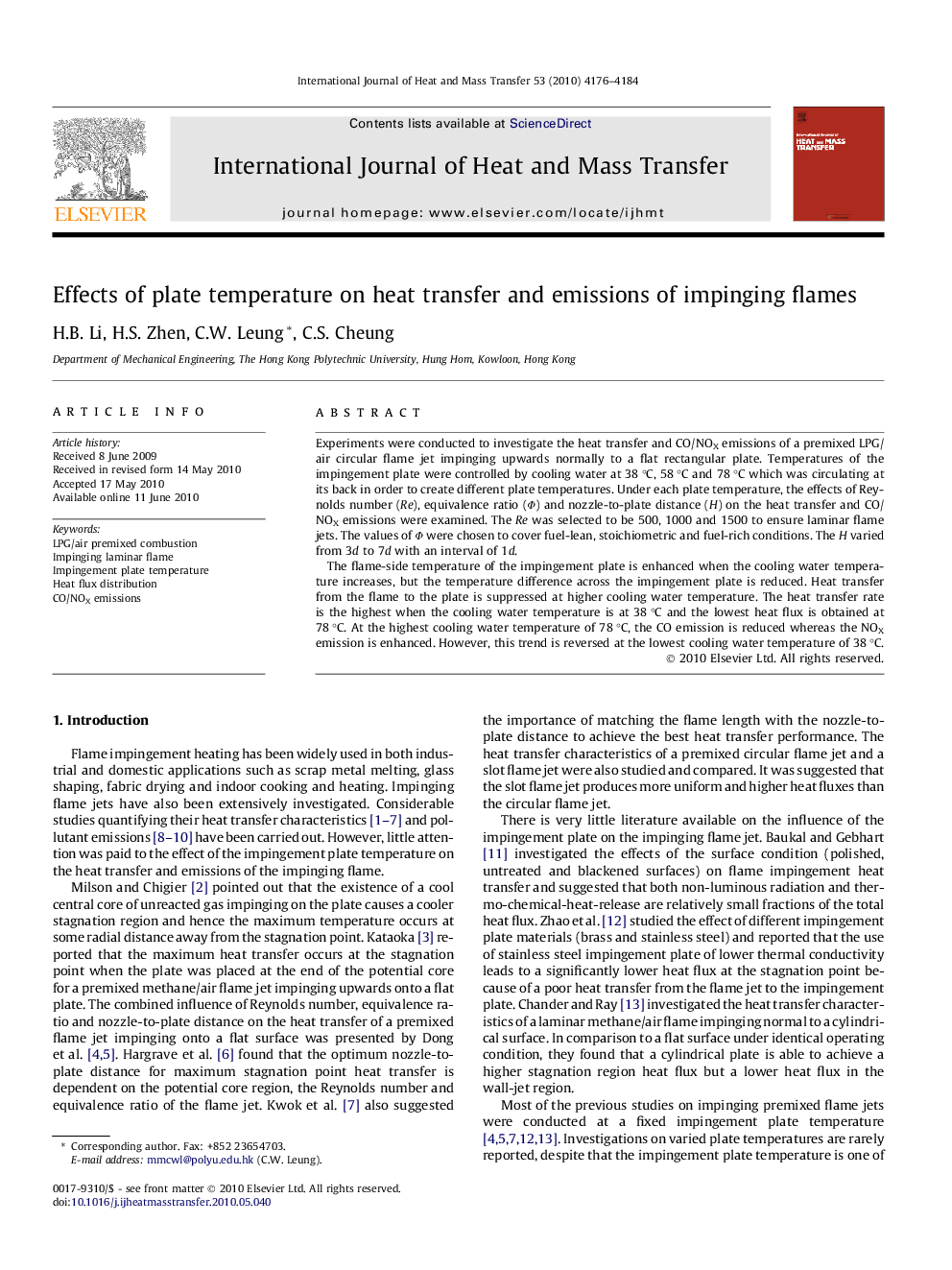| Article ID | Journal | Published Year | Pages | File Type |
|---|---|---|---|---|
| 659888 | International Journal of Heat and Mass Transfer | 2010 | 9 Pages |
Experiments were conducted to investigate the heat transfer and CO/NOX emissions of a premixed LPG/air circular flame jet impinging upwards normally to a flat rectangular plate. Temperatures of the impingement plate were controlled by cooling water at 38 °C, 58 °C and 78 °C which was circulating at its back in order to create different plate temperatures. Under each plate temperature, the effects of Reynolds number (Re), equivalence ratio (Ф) and nozzle-to-plate distance (H) on the heat transfer and CO/NOX emissions were examined. The Re was selected to be 500, 1000 and 1500 to ensure laminar flame jets. The values of Ф were chosen to cover fuel-lean, stoichiometric and fuel-rich conditions. The H varied from 3d to 7d with an interval of 1d.The flame-side temperature of the impingement plate is enhanced when the cooling water temperature increases, but the temperature difference across the impingement plate is reduced. Heat transfer from the flame to the plate is suppressed at higher cooling water temperature. The heat transfer rate is the highest when the cooling water temperature is at 38 °C and the lowest heat flux is obtained at 78 °C. At the highest cooling water temperature of 78 °C, the CO emission is reduced whereas the NOX emission is enhanced. However, this trend is reversed at the lowest cooling water temperature of 38 °C.
